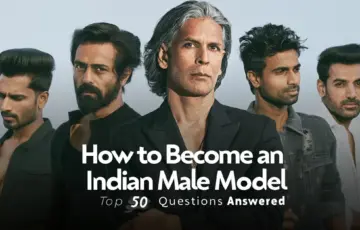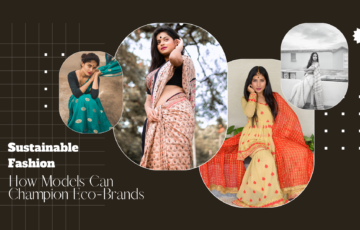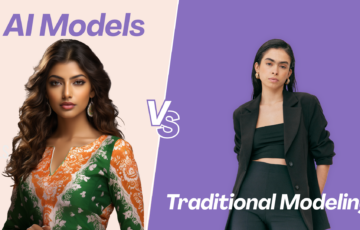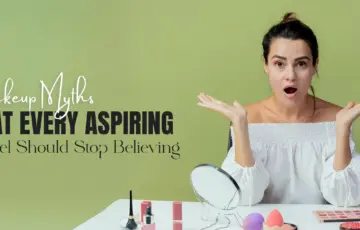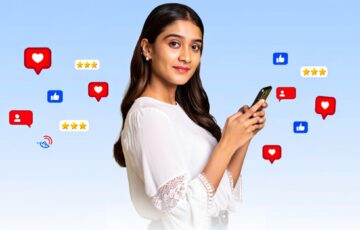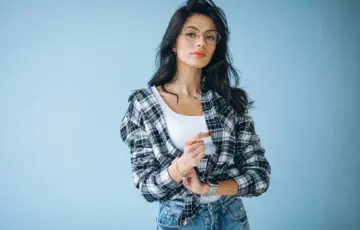If you’ve ever watched a high-fashion runway show and wondered, “Why do so many runway models look unattractive?” You’re not alone. It’s a question that often arises, especially among Indian fashion enthusiasts who are used to more conventional beauty seen in Bollywood and commercial advertisements.
But here’s the truth: runway modeling isn’t about looking beautiful in a traditional sense. It’s about showcasing fashion as wearable art, where models become living canvases for designers to express creativity, innovation, and attitude.
In the fashion industry, facial beauty takes a backseat to uniqueness, confidence, and striking features. High-fashion brands often prefer models with sharp bone structures, distinctive looks, or “editorial faces” that don’t distract from the clothing but rather enhance the artistic presentation. What some might label as “unattractive” is often what the fashion world calls high-fashion appeal.
In this article, we’ll break down:
- Why runway models are chosen for their non-conventional beauty
- How fashion aesthetics differ from what’s considered attractive in India
- Why understanding global beauty standards is key for anyone interested in modeling, fashion, or even starting a career as a model in India.
Whether you’re an aspiring model, a fashion lover, or just curious about model selection criteria in fashion shows, this deep dive will change the way you look at runway modeling forever.
Defining “Unattractive” – Who Sets the Standards in Modeling?
In India, the idea of beauty is often linked to flawless skin, symmetrical features, and a smile that lights up the screen, thanks to decades of influence from Bollywood, TV ads, and beauty pageants. But when it comes to the global fashion industry, these conventional traits take a backseat.
The term “unattractive runway model” is misleading. What many viewers consider “unattractive” is often just non-traditional beauty features that don’t conform to local ideals but stand out on an international runway. This includes models with:
- Sharp cheekbones
- Angular jawlines
- Wide-set eyes
- Freckles, gaps in teeth, or unique facial asymmetries
Fashion designers, modeling agencies, and fashion show casting directors look for faces that are visually striking and different, something that will grab attention and create a memorable impression.
Who defines these standards?
It’s not the public, it’s the top fashion houses, fashion magazines, and modeling scouts who set the tone. They are looking for what works best with couture garments, high-concept styling, and runway lighting, not what sells skincare or bridal wear in India.
So, the next time you wonder why high fashion models don’t look like Bollywood actresses, remember, runway modeling is an art form, not a beauty contest.
The Real Purpose of Runway Modeling
One of the biggest misconceptions about runway models is that they are meant to represent conventional beauty. In reality, the main goal of a runway model is to showcase the designer’s vision, not to look traditionally pretty.
The runway is a moving canvas where fashion takes center stage. Runway models are chosen for their ability to let the clothes speak, not overshadow them. Designers look for models who:
- Have tall, lean frames that fit sample sizes perfectly
- Possess minimal distractions in terms of facial expressions
- Move with confidence and elegance that enhances the outfit
- Have a face that is either neutral or editorial, allowing makeup and styling to transform their look
These models are not meant to smile or pose like commercial models; instead, they maintain a serious, focused walk that aligns with the high-fashion atmosphere. This is why many people, especially those unfamiliar with international fashion trends, perceive them as “unattractive.”
In contrast, commercial models in India are expected to smile, show emotion, and look relatable. They are selling a product or lifestyle, while runway models are presenting an artistic experience.
High Fashion’s Unique Aesthetic
When people ask, “Why do high-fashion models look weird or different?”, the answer lies in the specific aesthetic that luxury fashion brands and modeling agencies seek. High fashion doesn’t aim to mirror everyday beauty; it thrives on breaking norms and redefining visual appeal.
What Is a High-Fashion Look?
High-fashion models typically have what the industry calls an “editorial face”, a look that is intense, expressive, and unique. These features may include:
- High cheekbones and defined jawlines
- Almond-shaped or deep-set eyes
- A long neck and lean silhouette
- Unusual facial features that photograph well under dramatic lighting
- Minimal expressions that allow versatility for styling
This distinct aesthetic helps designers and photographers tell a story through the garments and visual setup, especially in fashion magazines and runway shows.
In India, where beauty standards are largely influenced by cinema and bridal fashion, these features may seem unconventional or even “odd.” However, international runway modeling demands uniqueness, not conformity.
Why the World Loves Unique Faces
In today’s global fashion scene, models with striking, imperfect, or unusual features stand out in a crowd. It’s not about being beautiful, it’s about being unforgettable. These models become the face of major campaigns, walk in Paris, Milan, and New York Fashion Weeks, and grace the covers of Vogue and Elle.
Brands like Balenciaga, Prada, and Alexander McQueen are known for choosing models who challenge mainstream beauty. The same trend is gradually influencing the Indian fashion industry, where unique looks are starting to gain value.
Commercial vs. Runway Modeling: What’s the Difference?
When people think of a “model,” they often picture a glamorous face in an ad or a celebrity walking a ramp. But in reality, commercial modeling and runway modeling are two completely different worlds, each with its requirements, standards, and purpose.
What Is Commercial Modeling?
Commercial models are the ones you see in:
- TV advertisements
- Billboards and product packaging
- E-commerce websites
- Beauty and fashion campaigns
They usually represent mainstream beauty standards, which in India often means:
- Fair or glowing skin
- Symmetrical facial features
- Bright, approachable smiles
- Relatable expressions and body language
These models are chosen to appeal to a broad consumer audience. Their job is to sell a lifestyle, product, or service — from face creams to clothing brands.
What Is Runway Modeling?
In contrast, runway models are selected to:
- Showcase designer outfits during fashion weeks
- Walk for luxury fashion brands and high-end couture designers
- Set the tone for upcoming fashion trends
Runway models need to have:
- Minimum height (usually 5’9” or taller for women)
- Size-zero to size-two body frames (though inclusivity is increasing)
- A face that doesn’t distract but transforms with styling
- A confident, serious walk that maintains focus on the garments
This is why you’ll rarely see runway models smiling or wearing heavy makeup; they’re meant to blend into the fashion story, not stand out as a personality.
Diversity and Changing Norms in Fashion Modeling
The world of fashion is evolving — and so are its beauty standards. For decades, the runway was dominated by a narrow definition of beauty: tall, ultra-thin, and Eurocentric. But today, diversity in fashion modeling is no longer a trend — it’s a movement.
Breaking Barriers on Global Runways
Top fashion brands and modeling agencies are now embracing:
- Darker skin tones
- Plus-size and curve models
- Transgender and non-binary models
- Older models above 40
- Models with vitiligo, scars, or disabilities
Icons like Winnie Harlow, Paloma Elsesser, and Precious Lee are redefining what it means to be beautiful and powerful on the runway.
This shift has opened doors for aspiring models worldwide, including many Indian and South Asian models who were previously underrepresented in global campaigns and fashion weeks.
What This Means for Indian Models
In India, the change is happening slowly but steadily. Fashion weeks in Delhi and Mumbai now feature:
- Dusky and dark-skinned models
- Ethnic diversity from North-East and South India
- Tall, lean models with sharp and unconventional features
Models like Bhumika Arora, Pooja Mor, and Radhika Nair have walked international ramps and appeared in global campaigns, proving that Indian features are being celebrated like never before.
Conclusion: Rethinking Beauty and Fashion in India
The idea that many runway models have “unattractive faces” is based on outdated and narrow definitions of beauty. In truth, runway modeling is about expression, originality, and creativity, not fitting into cookie-cutter beauty ideals.
In India, where fair skin, symmetrical features, and glamour dominate popular media, it’s easy to misunderstand the purpose behind high-fashion modeling. But as Indian models gain recognition on global runways, it’s time we shift our mindset and celebrate uniqueness, talent, and boldness in every form.
Whether you’re an aspiring model, fashion student, or simply someone curious about the modeling world, understanding the difference between runway modeling and commercial modeling is key. And more importantly, realizing that beauty is subjective — and in fashion, it’s often the “unusual” that makes the biggest impact.
So the next time you see a model who doesn’t look like a Bollywood star, don’t question their beauty. Instead, appreciate the fact that the fashion industry is making space for diverse faces, body types, and cultures, and that’s something truly beautiful.
For more information on modeling, stay tuned with Dazzlerr!


